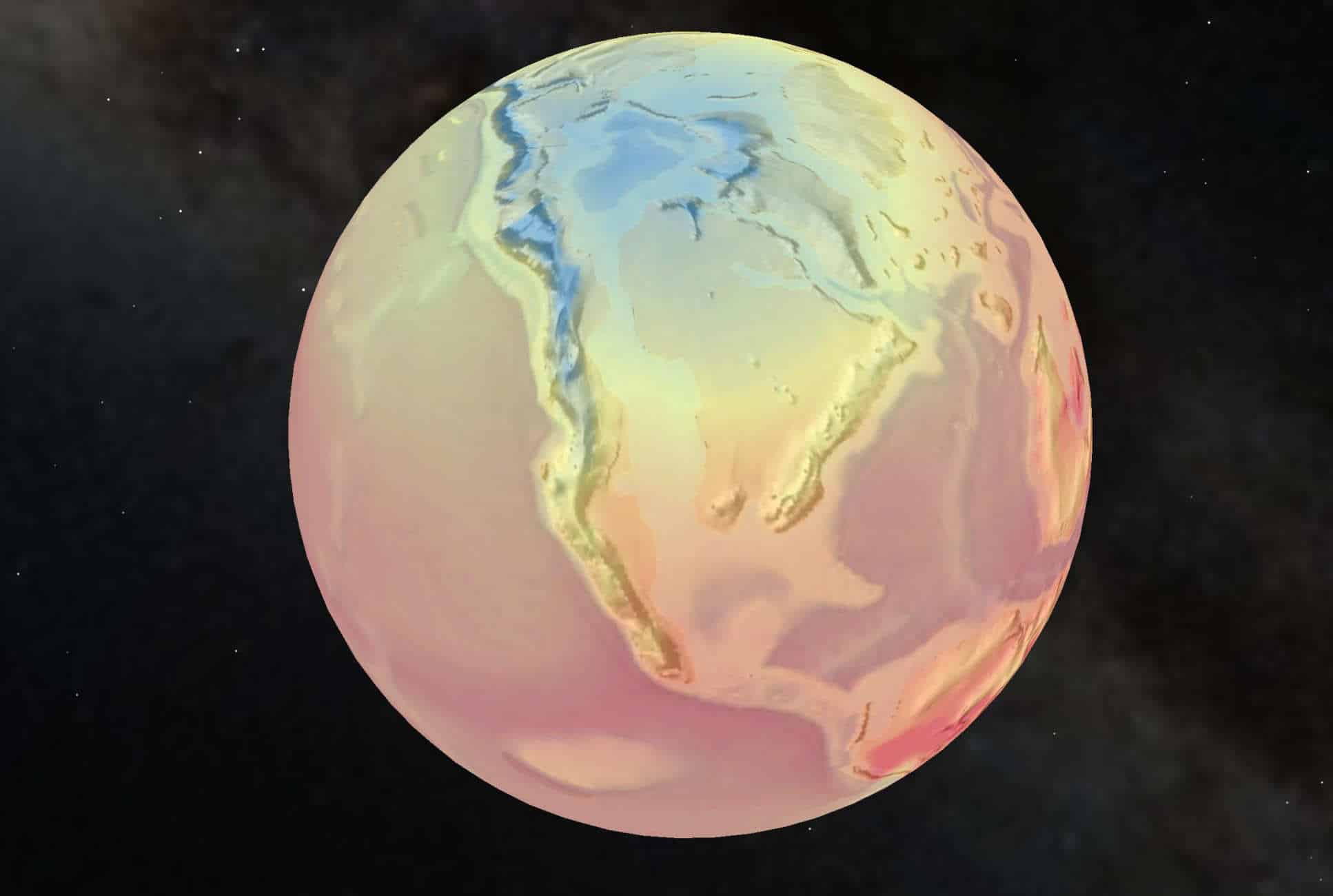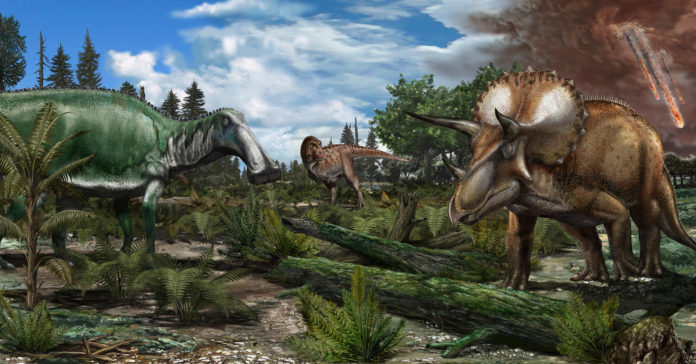Scientists believe that an asteroid impact, potentially combined with serious volcanic movement, wiped out the dinosaurs at the end of the Cretaceous period. Although, there is banter about whether dinosaurs were flourishing before this or whether they had been in decline because of long-haul changes in an atmosphere more than a large number of years.
Earlier, scientists used the fossil record and some mathematical predictions to propose dinosaurs may have just been in decline, with the number and assorted variety of species falling before the asteroid impact.
In a new study, scientists at the Imperial College London have modeled the changing environment and dinosaur species distribution in North America. Based on the model, scientists found that dinosaurs were likely not in decline before the meteorite.
Scientists particularly focused on the North America region as their many Late Cretaceous dinosaurs, such as Tyrannosaurus rex and Triceratops, are preserved.
When the Meteorite event occurred, the continent was separated in two by a large inland sea.

In the western half, there was a steady supply of sediment from the newly forming Rocky Mountains, which created perfect conditions for fossilizing dinosaurs once they died. The eastern half of the continent was instead characterized by conditions far less suitable for fossilization.
This means that far more dinosaur fossils are found in the western half, and this fossil record is often used to suggest dinosaurs were in decline for the few million years before the asteroid strike.
Scientists used ecological niche modeling that models which environmental conditions, such as temperature and rainfall, each species needs to survive. They then mapped where these conditions would occur across the continent and over time. This allowed them to create a picture of where groups of dinosaur species could survive as conditions changed, rather than just where their fossils had been found.
The team found habitats that could support a range of dinosaur groups were actually more widespread at the end of the Cretaceous, but that these were in areas less likely to preserve fossils.
Furthermore, these potentially dinosaur-rich areas were smaller wherever they occurred, again reducing the likelihood of finding a fossil from each of these areas.
Lead researcher Alessandro Chiarenza, a Ph.D. student in the Department of Earth Science and Engineering at Imperial, said: “Dinosaurs were likely not doomed to extinction until the end of the Cretaceous, when the asteroid hit, declaring the end of their reign and leaving the planet to animals like mammals, lizards and a minor group of surviving dinosaurs: birds.
“The results of our study suggest that dinosaurs as a whole were adaptable animals, capable of coping with the environmental changes and climatic fluctuations that happened during the last few million years of the Late Cretaceous. Climate change over prolonged time scales did not cause a long-term decline of dinosaurs through the last stages of this period.”
The study, in other words, suggests how the changing conditions for fossilization mean previous analyses have underestimated the number of species at the end of the Cretaceous.
Journal Reference
- Chiarenza, A.A., Mannion, P.D., Lunt, D.J. et al. Ecological niche modelling does not support climatically-driven dinosaur diversity decline before the Cretaceous/Paleogene mass extinction. Nat Commun 10, 1091 (2019). DOI: 10.1038/s41467-019-08997-2
